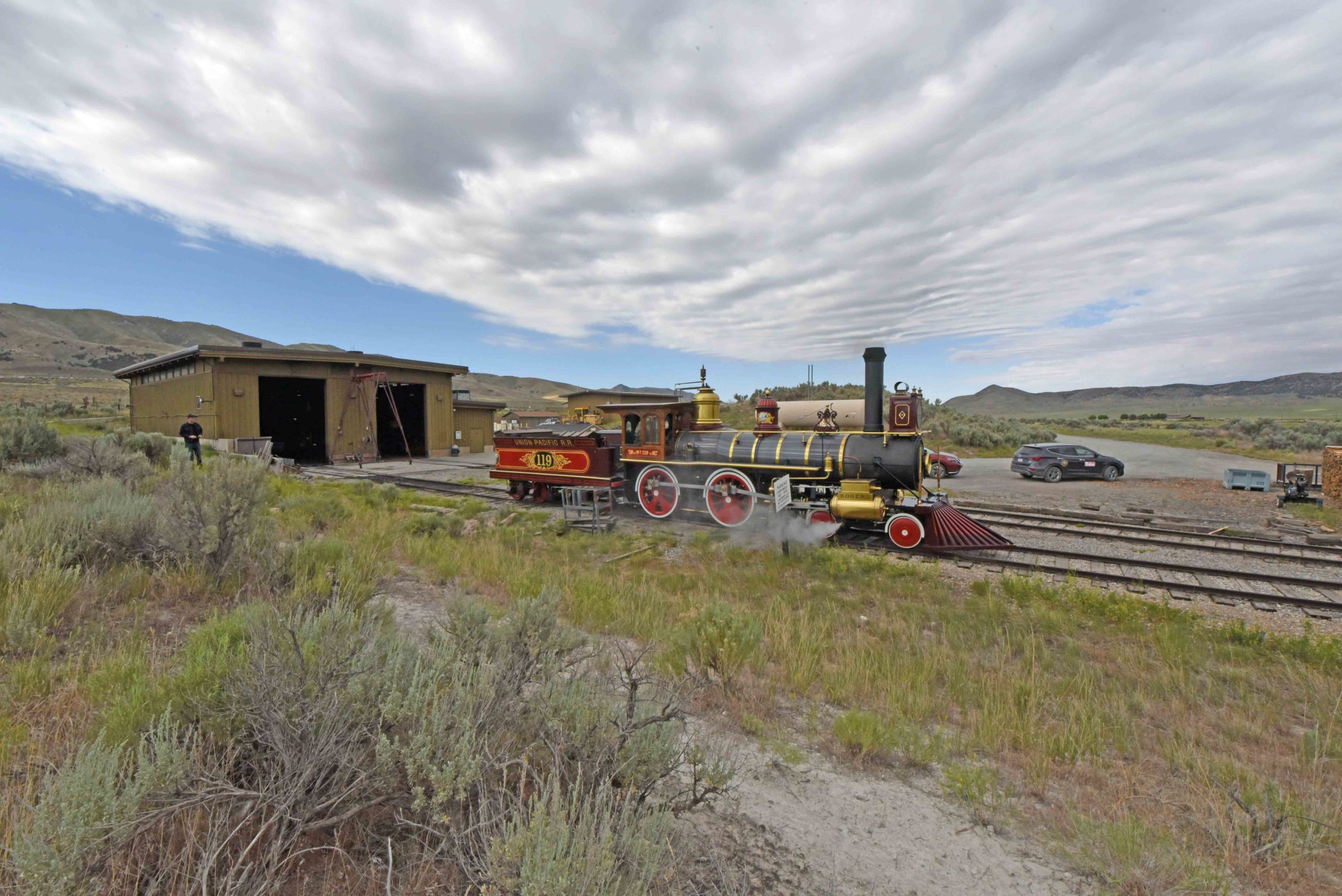Come May 10, 2019, two locomotives will be in the spotlight for some 12,000 spectators at the 150th celebration of the first Transcontinental Railroad completion: Replicas of Central Pacific Jupiter and Union Pacific No. 119.
For the last 40 years, the two California-made replicas have dazzled visitors to the Golden Spike National Historic Site at Promontory Summit, Utah, with their gaudy dress, ornate appliances, and diminutive size.
Trains magazine and documentary video producer Rich Luckin visited the lonely site for several days in June 2018 to collect photos and video for Rich’s production of Journey to Promontory, an hour-long made-for-PBS show that traces the history of the first Transcontinental Railroad, and our special 100-page magazine that goes with it. The National Park Service generously granted interviews, special access, and made available the locomotives and crews for us.
We tagged along with facility manager Richard Carroll and assistant Cole Chisam as they prepared the engines for another day in front of the visitors. The locomotives burn the same fuels their predecessors did, so that means wooding up Jupiter and coaling up No. 119. Their fires must be rebuilt each morning and their boilers brought up to operating pressure. The many oil cups must be filled the grease fittings hit.
They may be replicas, but they are still working steam locomotives. Once they’re ready, workers take the locomotives out one-by-one to assume the poses they held in 1869, nearly nose-to-nose with dozens of railroaders and railroad managers clinging to their sides. Jupiter on the west end, goes out first and returns last. It has to run the wye.
No. 119 goes out last and returns first, heading westbound on its trek to the spot where history was made.
The engine house for the two locomotives is a modern affair in stark contrast to the mid-1800s power that it houses with pits, cranes, tools, and a modest shop. It is discreetly set into a hillside off a wye to the east of the visitor’s center. It is also off-limits to visitors, which gives Carroll and Chisam a place to adjust their charges out of sight in maintenance garb. When it comes time to go in front of the public as if it were 1869, they change into their costumes of an engine crew of the period.
Other than a General Electric 25-ton locomotive for moving the engines when they are cold and dead, there’s no other rolling stock at Promontory. A coach or a replica of an office car would begin to fill out the yard. But for now there are the replicas, impersonators of two of American railroading’s most famous early motive power.
Want to find out more about the Transcontinental Railroad?
Facts, figures, history, and more are available from our special Journey to Promontory magazine, available at our partner shop, the Kalmbach Hobby Store.















The Nevada State Railroad Museum has the original office car, No 17, later V&T Office Car ‘BONANZA’ in Carson City used to convey the officials to the ceremony, before being sold to the V&T. They tout it as the last surviving piece of rolling stock from that day and the most historically significant passenger car surviving.